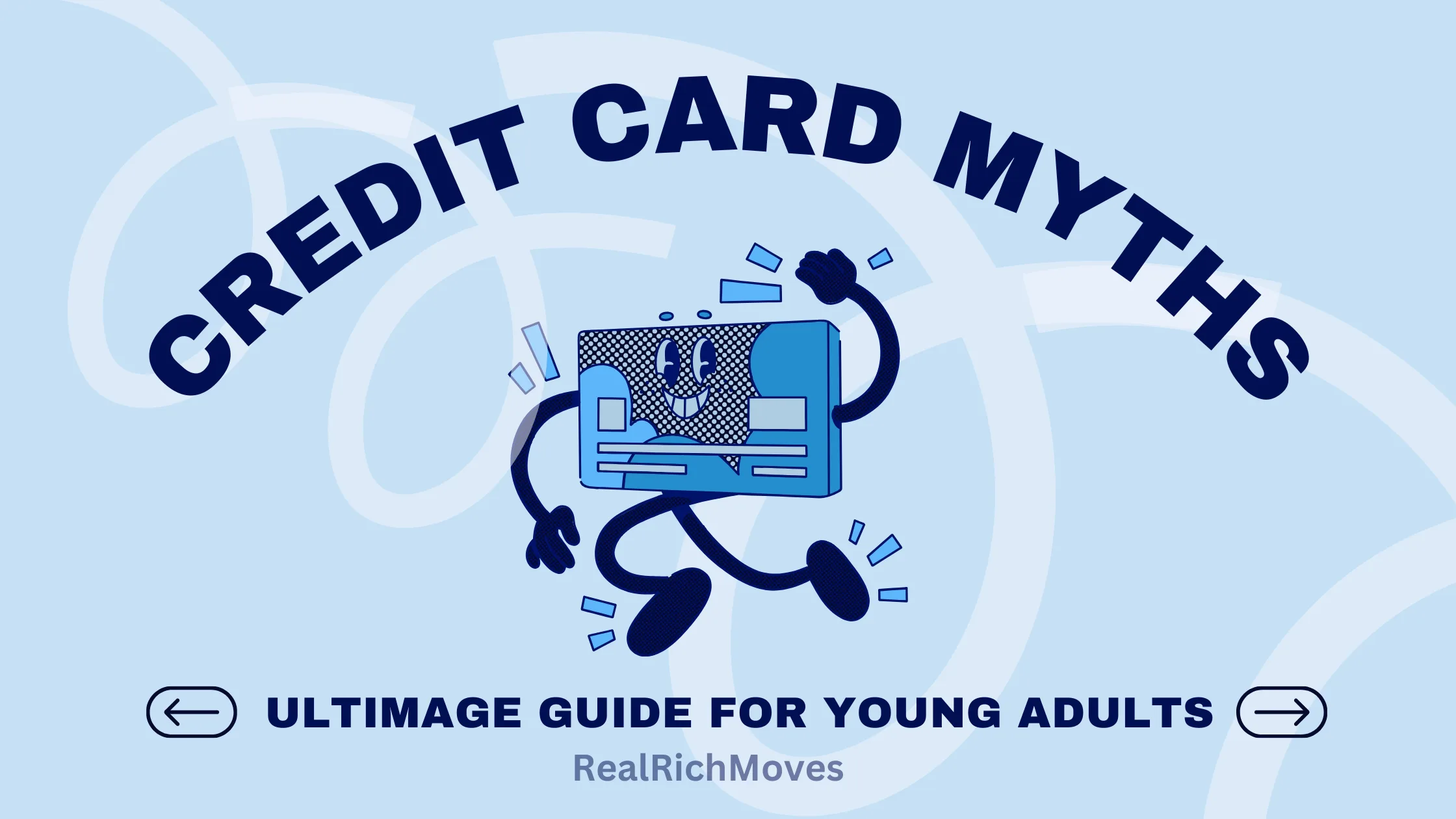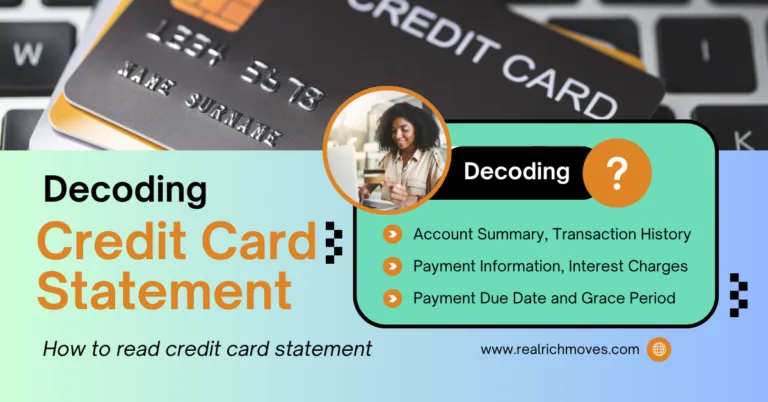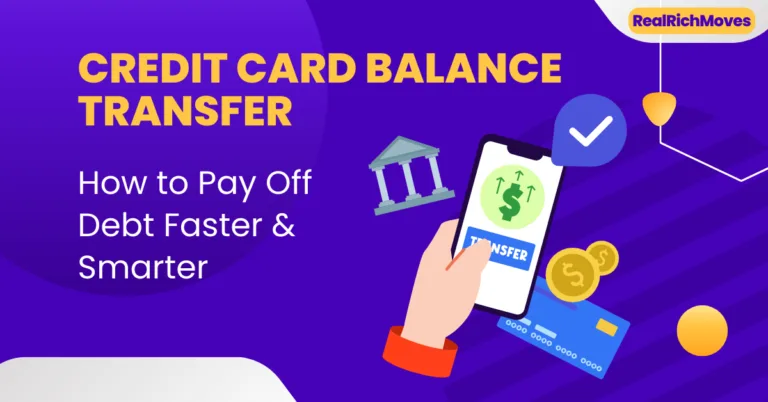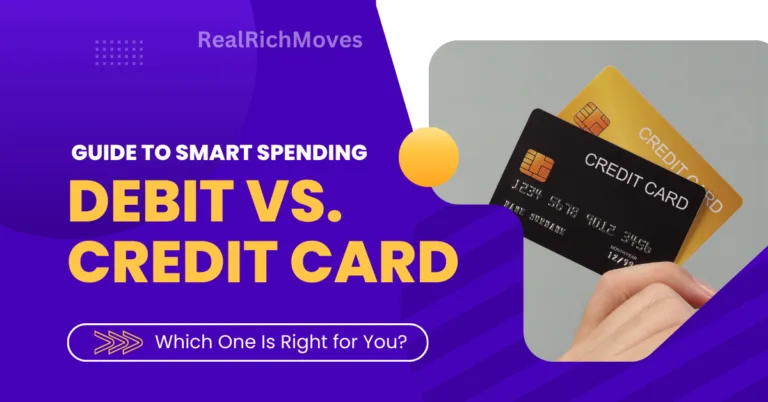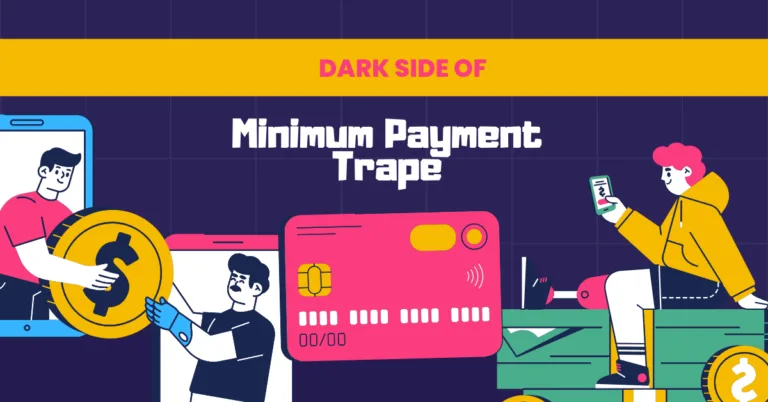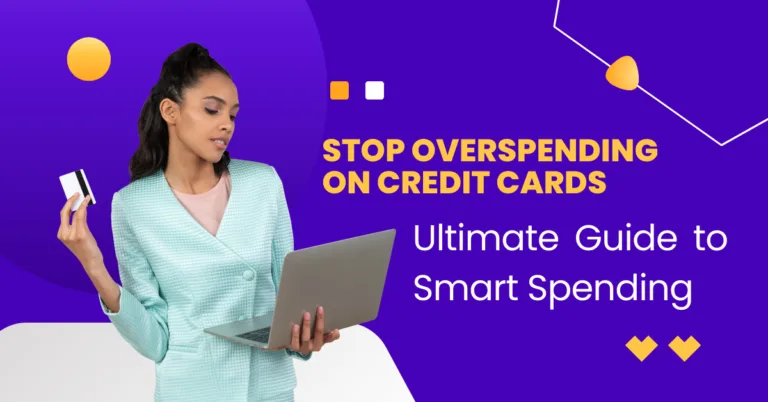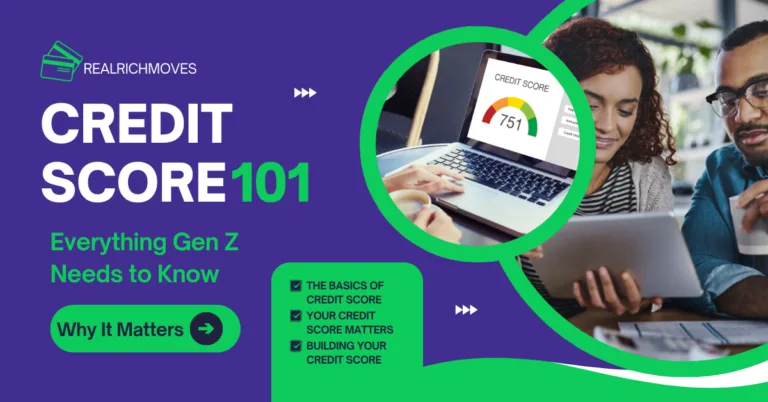Introduction
Hey fam! Let’s be real for a sec – credit cards can be confusing AF. One minute you’re swiping for that new fit, the next you’re staring at a bill that makes your eyes water. Maybe you’ve seen a friend drowning in credit card debt, or maybe you’re just trying to figure out the whole rewards thing. It’s all good, we’ve all been there!
Credit cards, despite the confusion, are a big part of adulting. They can be either your best friend or your worst enemy. It all depends on how you use them. At its core, a credit card is a tool to borrow money for your spending and repay it later. Understanding how they work and especially what are the common Credit Card Myths for Young Adults, will determine if they are going to be your tool for success or a weapon of financial destruction.
That’s why today, we’re here to talk about something essential – Credit Card Myths for Young Adults. It’s time to break down the misconceptions and set you up for financial success. Let’s dive into how these little cards actually work and help you navigate your financial journey.
This post is your ultimate guide to understanding the truth about credit cards. No more confusion, no more falling for traps, just straight-up knowledge to help you build your best financial life.
Let’s get this bread, fam.
Now that you have a little bit of idea why this topic is important, let’s learn the basics.
Decoding the Basics: What You NEED to Know About Credit Cards
Alright, before we jump into the myths, let’s get the foundation right. Think of this as the “Credit Cards for Dummies” crash course – but way more engaging. Let’s talk about the fundamentals of how these plastic rectangles actually function, how they are different from debit cards, and when to use each of them.
Credit Cards 101: How they work?
First up, let’s break down how a credit card actually works. A credit card is basically a short-term loan from a bank or financial institution. They give you a spending limit, and when you use it, you are essentially borrowing money to be paid back later.
Now, a credit card isn’t like your debit card. With a debit card, you’re using your own money, which is directly linked to your bank account. But with a credit card, you’re borrowing funds from the credit card company. You have to repay the credit card balance before the due date to avoid additional fees and interest charges.
So when should you use a credit card and when to stick with debit? Think of debit cards for daily expenses or stuff you have the money for right now. Use credit cards when you need it, or for major planned purchases when you can pay back within the grace period to build credit.
Understanding Key Credit Card Terms
Okay, let’s get down to the nitty-gritty. Here are some of the most important credit card terms that you need to know to navigate the world of credit cards and especially avoid common Credit Card Myths for Young Adults.
- APR (Annual Percentage Rate): The APR is the interest rate you are charged on any outstanding balances. It’s the cost of borrowing money and it is expressed as a percentage. The higher the APR, the more you pay in interest if you don’t pay the full balance each month. So pay attention to this, fam.
- Credit Limit: The credit limit is the maximum amount you can borrow on your credit card. Don’t think that your credit limit is free money. Stay below that limit because maxing out your card can hurt your credit score. Also, It’s a good idea to use only a portion of your credit limit to show responsible credit management.
- Minimum Payment: This is the lowest amount you need to pay each month to avoid late fees. Making only the minimum payment is a dangerous game and it is one of the Credit Card Myths for Young Adults that should be avoided at all cost. It keeps you in debt for much longer and accumulates high interest charges.
- Grace Period: The grace period is the time between the end of your billing cycle and your payment due date. It’s usually around 21-25 days. If you pay your balance in full during the grace period, you avoid interest charges. It is a crucial period to avoid getting charged high interest rates.
- Credit Utilization Rate: This is the amount of your credit limit you are using. It’s calculated as the ratio of your total credit card balances to your total credit limits. Experts recommend keeping it below 30% of your available credit to boost your credit score. This metric plays a major role in determining your credit score so you need to keep track of it.
Building Credit vs. Building Debt
Here’s the real talk: credit cards can be a powerful tool to build credit but it can also be the reason of your debt. The key is understanding the difference and avoiding all the common Credit Card Myths for Young Adults that leads to financial issues. When used responsibly, credit cards can boost your credit score, which is essential for things like getting a car, renting an apartment, or even getting a good cell phone plan.
On the flip side, irresponsible use of credit cards can lead to significant debt, which takes years to pay off and can affect every aspect of your life. It’s essential to use credit cards strategically to build a positive credit history without falling into the traps of debt. Understanding the distinction between these two paths is crucial for responsible credit card management.
Now that we know the basic terms and functionality of credit cards, it’s time to dive into some of the myths associated with it.
Ok, so now that we have a handle on the basics, let’s get into the juicy part, all the misconceptions and misinformation floating around about credit cards.
Myth Busters: Cracking the Top Credit Card Misconceptions
Alright, it’s time to play MythBusters, RealRichMoves style! Let’s dive into the most common and problematic credit card myths that trap young adults and set the record straight. We’ll break down each myth, give you the real deal, and help you avoid common mistakes. Let’s get started!
Credit Card Myths for Young Adults – It’s Free Money
Okay, let’s start with the biggest Credit Card Myths for Young Adults – that using credit cards is like having free money. I know it’s tempting to think of your credit card as an unlimited bank account. You swipe, you get stuff, and it seems like the money is just magically appearing. But here’s the real deal: it’s NOT free money.
Using a credit card means you’re borrowing money, and eventually, you have to pay that money back to your credit card company, with interest if you don’t pay it back in full during the grace period. Overspending and not being able to repay your balance is a one way ticket to credit card debt. It’s very important to know this, because believing this Credit Card Myths for Young Adults can be very dangerous.
Myth #1: Just Make the Minimum Payment
Okay, next up on the myth list: “Just make the minimum payment and everything will be fine!” This is one of the most dangerous Credit Card Myths for Young Adults out there. Credit card companies love it when you only make the minimum payment because they make a ton of money from the interest.
Let’s say you have a balance of $1000, with an APR of 18%. If you only make the minimum payment, it can take years to pay off the debt, and you will end up paying way more than the original amount due to interest. You’ll be stuck in debt for a long time. Making just the minimum payment will keep you in debt longer. Don’t fall into this trap, pay your balances in full.
Myth #2: Closing Old Credit Cards is Good for Your Score
Time to bust another myth: Closing old credit cards improves your credit score. This is actually one of the worst things you can do to your credit score. You’d think closing old cards will mean less debt and hence better credit score, but no.
Closing an old, unused credit card actually affects your credit utilization and length of credit history. Credit utilization is the amount of credit you are using vs. total credit available, and it makes a major portion of your credit score. And length of credit history is also a major factor, as it shows how long you have been using credit cards. Instead of closing old credit cards, keep them open and use them minimally to keep the credit history alive. Avoiding such Credit Card Myths for Young Adults will help you maintain and grow a healthy credit score.
Myth #3: Checking My Credit Score Hurts It
Alright, next up on the myth-busting list: “Checking your credit score will hurt it.” This is totally NOT true! I know a lot of people worry about checking their credit score, as they fear it will lower it. But no, there’s a big difference between hard and soft inquiries.
Checking your credit score yourself is a soft inquiry, which does not affect your credit score. On the flip side, when you apply for a credit card, loan, or any other financial product, it will trigger a hard inquiry, which will affect your credit score. So don’t be afraid to monitor your credit report, as it is actually good for your financial health. Staying aware of the common Credit Card Myths for Young Adults is key to smart credit management.
Myth #4: Credit Card Rewards Make You Money
Next up on our list of Credit Card Myths for Young Adults is the idea that credit card rewards are basically free money. It’s easy to get hyped about cash back, travel points, or other perks offered by credit cards. And yes, these rewards can definitely be useful.
But here’s the truth, you are not making “free” money here. These rewards are only beneficial if you are actually paying off your balance in full. If you’re racking up debt and paying high-interest charges, the benefits are basically canceled out by interest charges. So use them wisely and avoid overspending.
Myth #5: Having Multiple Credit Cards Means Having More Credit
Okay, here’s one that a lot of people fall for: Having multiple credit cards means you have more credit and hence you have more money to spend. This myth is not entirely true. Yes, you may have more available credit, but it does not mean you have more money to spend. It just means you have more credit limit to borrow from.
Having multiple cards makes it easier to overspend, and you might end up in a tricky situation trying to juggle all your cards and managing your balance. It’s vital to use credit cards responsibly and only use them as a tool to manage your finance. By understanding this Credit Card Myths for Young Adults, you will avoid overspending and focus on responsible credit management.
Myth #6: All Credit Cards Are the Same
Let’s debunk the idea that all credit cards are the same because they are not. There are many types of credit cards with their own benefits and downsides, so you need to do your research and select a credit card that suits your needs. You have your rewards cards, low interest cards, secured cards, student cards and each of them have different benefits.
Before applying to any card, compare various credit cards and look at their terms, conditions, fees and benefits. Pick one that fits your financial situation. Failing to understand these differences is one of the major Credit Card Myths for Young Adults.
Myth #7: You need to Carry a Balance to Improve Your Credit Score
Here’s a big one, a misconception promoted by credit card companies: “You need to carry a balance on your credit card to improve your credit score.” This is a bold-faced lie and one of the most harmful Credit Card Myths for Young Adults.
Credit card companies want you to think that you need to carry a balance so they can charge you interest every month. You don’t need to carry a balance. By paying your balance in full every month, you show responsible financial behavior, which will actually boost your credit score. So don’t fall for this myth, fam, and always pay in full.
Now that we have busted some of the biggest credit card myths, let’s talk about some of the common traps.
Alright, we’ve busted some myths, but the game is not over, fam! There are still some traps you need to be aware of and avoid, in order to be financially free. Let’s talk about those, because knowing about these traps and the common Credit Card Myths for Young Adults will definitely help you take control of your financial journey.
Credit Card Traps and How to Avoid Them
Navigating the world of credit cards is not all sunshine and rainbows; there are some traps you need to watch out for. Let’s talk about some of those traps and how to avoid them. Understanding these pitfalls is crucial for maintaining financial stability.
Late Payment Fees: The Sneaky Charges
Late payment fees are those sneaky charges that can add up fast. Credit card companies will not hesitate to charge you fees when you are late, and they can quickly rack up your credit card balance. Late payments can also hurt your credit score.
So how do you avoid them? Set up payment reminders on your phone, use automatic payments if you can, and always keep track of due dates. It is very important to avoid late payments as it negatively impacts your credit score. Being aware of this issue will help you avoid one of the common Credit Card Myths for Young Adults.
The Danger of Cash Advances
Cash advances are another common trap you should avoid, as it is an expensive way to borrow money. When you get a cash advance on a credit card, you are essentially borrowing cash from your credit card account, and credit card companies charge way higher interest rates on it.
Also, unlike regular purchases, cash advances do not have a grace period, so interest starts accumulating right away. It is one of the major Credit Card Myths for Young Adults to think that cash advances are similar to credit card purchases. It is better to avoid cash advances altogether.
Balance Transfers: Use them Wisely
Balance transfers can be beneficial, but they can also be a trap if you are not careful. A balance transfer means moving the balance from one credit card to another, typically to take advantage of a lower interest rate. Sounds good, right?
Yes, it is if you are careful, but if you are not, it can trap you. Balance transfer usually comes with fees, and the lower interest rate may not last forever. So before opting for a balance transfer, make sure you read all the terms and conditions, and it is the best option for you to pay off your existing debt. Understanding all the terms related to the Credit Card Myths for Young Adults can really help you make wise decisions.
Overspending and Impulse Buying
Last but not least, overspending and impulse buying are two of the biggest traps when using credit cards. It’s so easy to swipe that plastic, especially for impulse buys, but it will quickly lead you to debt. Because it can seem like you are not spending your own money, you can end up spending more than you can afford.
To avoid this trap, create a budget, track your expenses, and only use your credit card for planned purchases. You should always use your credit card responsibly and avoid overspending. Knowing this will help you avoid a major Credit Card Myths for Young Adults trap, and help you build positive financial habits.
Now we have covered all the traps related to credit cards. Now, let’s talk about building a solid financial future by using your credit card smartly.
Alright, fam, we’ve gone through the myths and traps, now let’s talk about how to use credit cards to build a solid financial future. It’s all about using them as a tool for financial growth, and not as a ticket to debt and financial chaos. Understanding these key strategies will definitely help you use credit cards responsibly and avoid Credit Card Myths for Young Adults.
Building a Solid Financial Future with Credit Cards
Credit cards aren’t inherently bad, in fact, if used correctly, they can be powerful tools for building a solid financial future. They can be your friend, if you know how to use them. Let’s explore the best strategies to make them work for you.
Choosing the Right Credit Card for You
First up is choosing the right credit card. The right card will depend on your needs and spending habits. Don’t just grab any card you see, you need to do a little bit of research. You need to consider the rewards, annual fees, and the interest rates before applying for a card.
If you are just starting out, consider student credit cards or secured credit cards as good options to build credit. Do some research, compare various offers, and pick a card that fits your current financial situation. Understanding the types of credit cards, will help you avoid believing the common Credit Card Myths for Young Adults.
Strategies for Managing Your Credit Card Responsibly
Okay, once you have a card, you need a solid strategy to manage it well. First and foremost, create a budget and track your expenses, so you know where your money is going. And always make sure you pay your balance in full every month to avoid interest charges.
Set up automatic payments, monitor your credit report regularly and avoid overspending. By following these rules you will not only avoid debt but also build healthy financial habits. By developing these habits you will be sure to avoid a lot of common Credit Card Myths for Young Adults.
Repairing Damaged Credit
What if you have already made some mistakes? It’s not the end of the world, it can still be fixed. If you have made some credit card mistakes, the first thing you need to do is to understand why you made them and avoid repeating them again. Then, create a plan to reduce your debt, by using strategies like balance transfers, or debt consolidation.
Being patient and consistent is key to repairing damaged credit. It’s going to take some time but eventually, you can improve it by focusing on responsible credit management. Also, avoid believing any Credit Card Myths for Young Adults as you try to improve your credit score.
Alright, folks, we’ve covered a lot of ground, and I hope this post has helped clear up the confusion and myths surrounding credit cards.
Okay, folks, we’ve covered a lot today! We’ve explored the basics, busted some major myths, and talked about strategies for building a solid financial future. Now it’s time to wrap it all up, and take control of your financial health.
Conclusion: Take Control of Your Credit Card Journey
So, what have we learned today? Credit cards aren’t inherently good or bad; they’re just tools. It all depends on how you use them. We’ve busted the biggest Credit Card Myths for Young Adults, like thinking it’s free money, you only need to pay the minimum, or that carrying a balance is good for your credit.
Understanding these myths is the first step to taking control of your finances. You can use these tools to build your credit score and improve your financial health. Remember, you have the power to build a financially secure future.
Use this information, take charge of your credit card journey and build your financial freedom.
Ready to ditch the Credit Card Myths for Young Adults and build your financial future? Sign up for our free newsletter for more debt-management tips and tools!
Download our free budget template or check out our other blog posts for more tips!
Leave a comment with your biggest credit card myth you used to believe.

